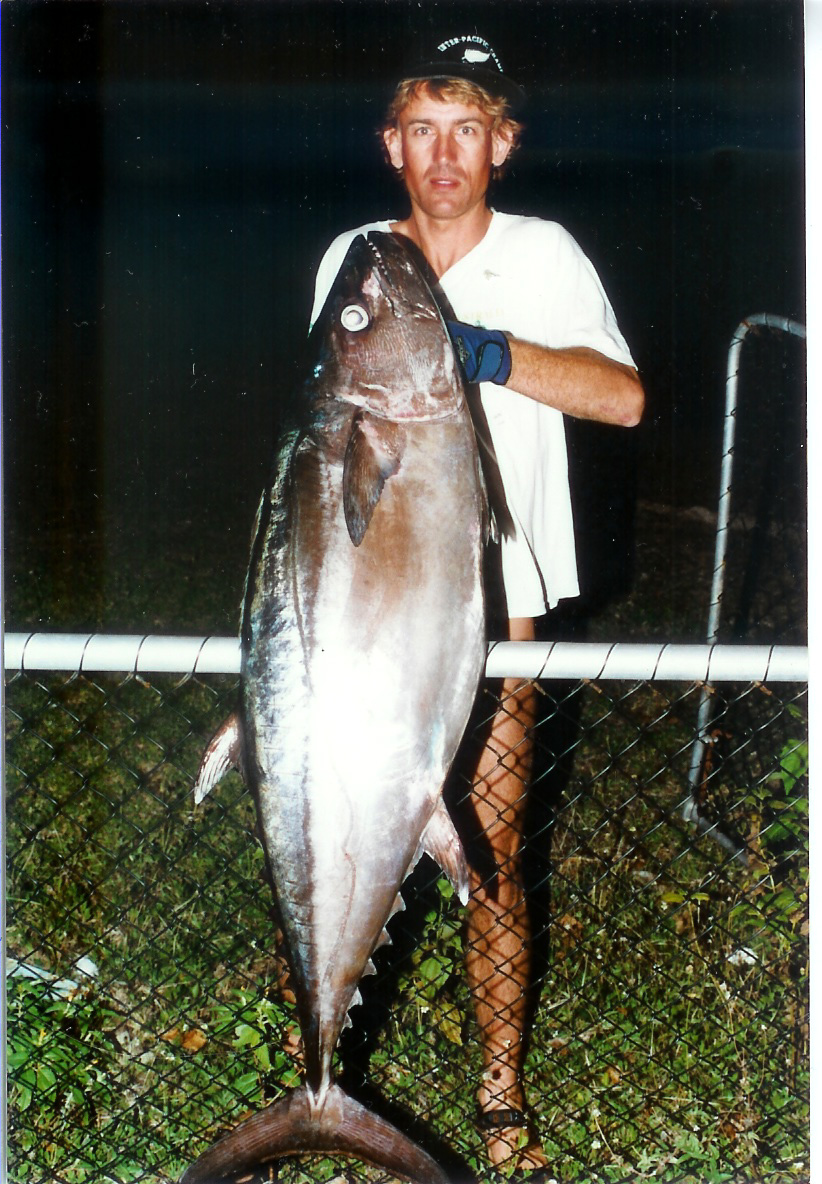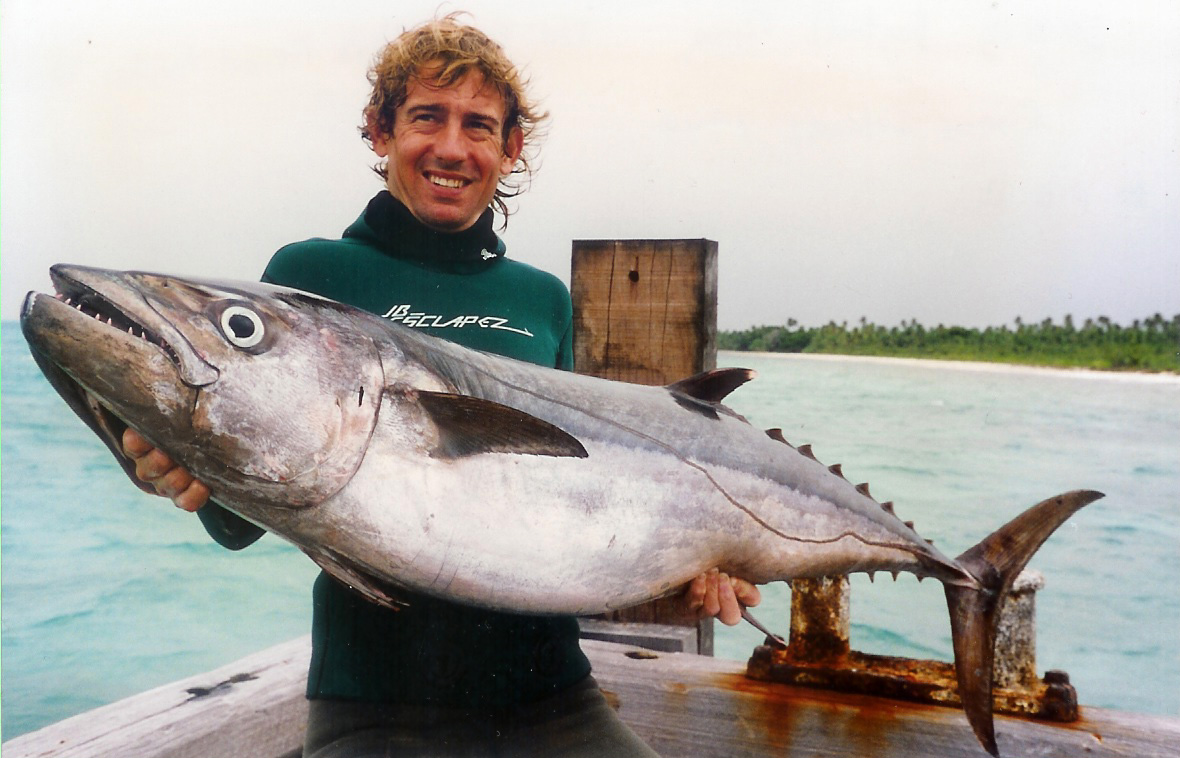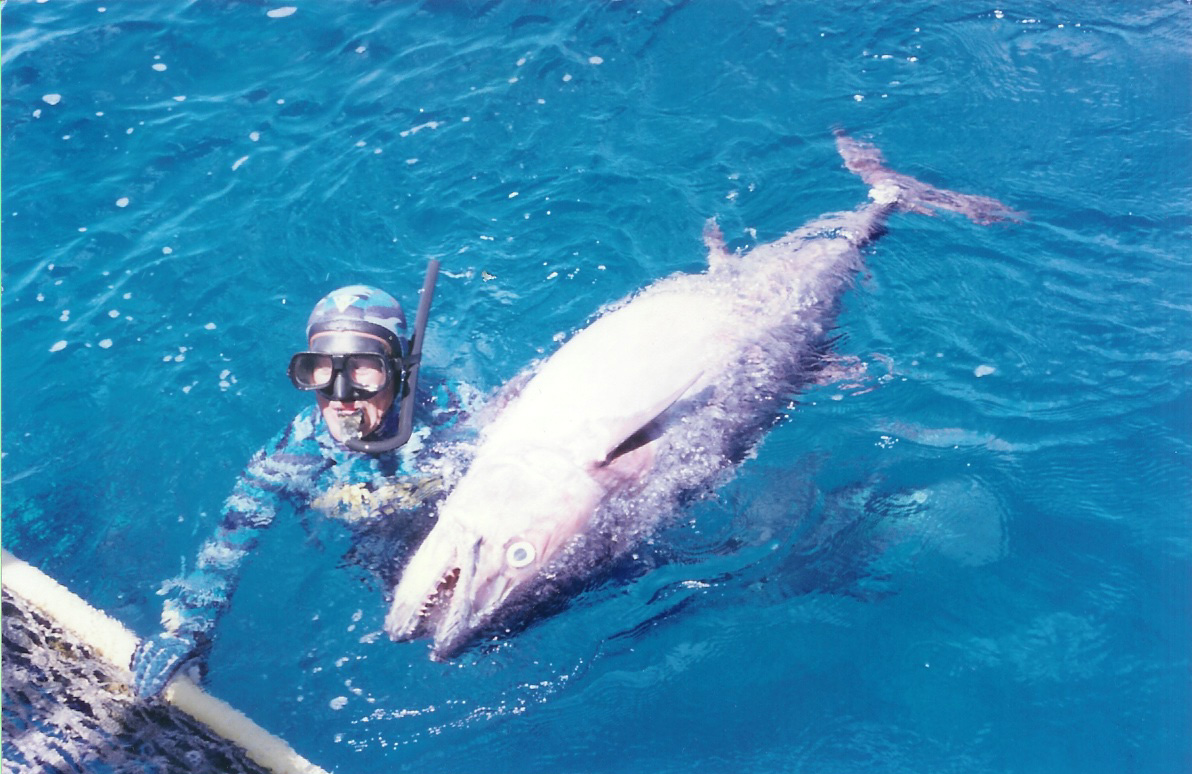Dogtooth Tuna
Where in Western Australia
- Cocos Islands: off Horsborough Island
- Christmas Island: Egeria Point
- Scott Reef
- Ashmore Reef
- Rowley Shoals
- Coastal areas: Ningaloo to Broome, very uncommon.
Elsewhere
- Indo-Pacific Tropical regions including Red Sea, Coral Sea etc.
Status
- Considered by a number of well noted blue water hunters as one of the most difficult fish to capture.
Habitat
- Drop offs onto sand gutters, big sandy gutters leading up into the reef from very deep water, coral niggerheads, pinnacles near very deep water, channels in coral reef systems with a bit of current, bait fish etc.
Size range
- Relatively abundant up to 30 kg. Sometimes found in small schools up to 15 fish. More often two and threes. Larger fish are rarer. Reaches weights over 100kg.
How to find
- Make a lot of noise, use of burley, use of flashes or shiny objects may increase sightings.
- Spend the time in the water.
Behaviour
- Super powerful fighting fish, curious, hungry at certain times of the month, quite often just ignores anything you do.
Problems encountered with this fish
- Expensive to reach, only remote locations seem to have any fish.
- You need to dive about 22-25 metres but often deeper than this i.e. 30 metres+.
- Quite often shy, although completely opposite at times.
- Difficult to land, preferable to kill the fish outright if possible. If not, risk losing all your equipment on larger fish as they dive directly into very deep water and try to snag your gear up.
- Very popular with sharks, often consumed in feeding frenzies. Found in association with sharks.
- Using a pranger head with eight inch barbs mounted on a heavy shaft has proven quite effective. Aim for area behind the shoulder. A spine shot or penetration of the swim bladder can be achieved with a pranger.
- Straight head or tips can be used if a suitable rig is employed.
- A combination of lead rope, floats and bungee. Bungees can be ripped to shreds if used as the lead rig connected to the gun or spear shaft. Still, a perfect shot is the only really effective method.
- Large fish are not very common, expect to spend many days in the water to locate these.
- Much diving is required to intercept these fish as they cruise through on the bottom. Imagine hunting disinterested Spanish Mackerel in 25 metres plus and they’re right down the bottom. This gives you some insight as to what you are up against.
- Despite quite intensive hunting in recent years, on live aboard boats etc, not many divers have landed more than a few fish over 100 pounds (45 kg).
- Great eating, highly targeted nowadays, an expensive trophy fish.


